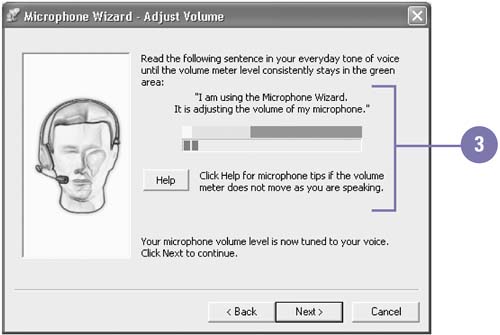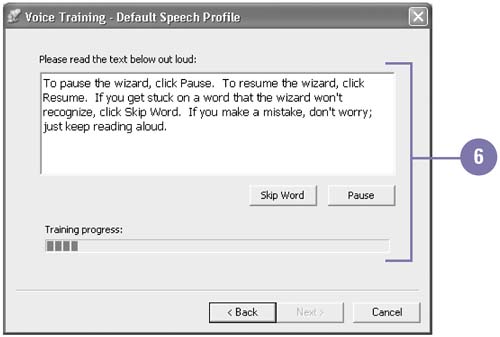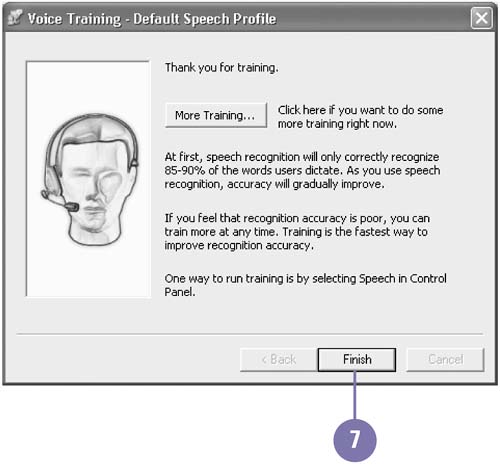Controlling Programs with Your Voice
| The Office Language bar allows you to dictate text directly into your document and also to control buttons , menus , and toolbar functions by using the Voice Command option. When you first install an Office program, the Language bar appears at the top of your screen. If you are using English as a default language, the toolbar is denoted by the letters EN. (Other languages have appropriate abbreviations as well.) Before you can use speech recognition, you need to install it first. You can choose the Speech command on the Tools menu in Word, or you can use Add Or Remove Programs in the Control Panel to change the Office 2003 installation. Before you can use the Language bar for either dictation or voice commands, you need to connect a microphone to your computer, and you must train your computer to your voice using the Speech Recognition Wizard. Work with the Language Bar
Train Your Computer to Your Voice
Execute Voice CommandsThe two modes, Dictation and Voice Command, are mutually exclusive of one another. You do not want the word File typed, for example, when you are trying to open the File menu. Neither do you want the menu to open instead of the word File being typed when you are in the middle of a sentence. As such, you must manually click either mode on the Language bar to switch between them. The Voice Command mode allows you to talk your way through any sequence of menus or toolbar commands, simply by reading aloud the appropriate text instead of clicking it. For example, if you wanted to print the current page of the document you are working on, you would simply say File, Print, Current Page, OK (without saying the commas between the words as written here). You need not worry about remembering every command sequence because as you say each word in the sequence, the corresponding menu or submenu appears onscreen for your reference. |
EAN: 2147483647
Pages: 418




